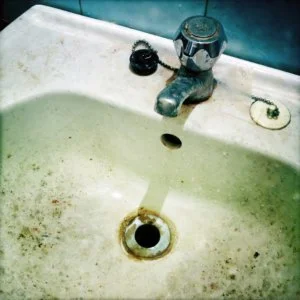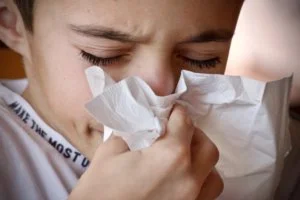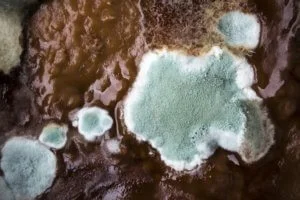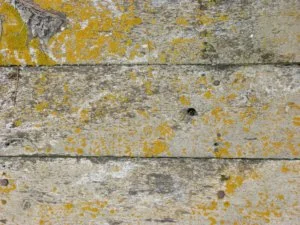Mold in a house, unfortunately, is a common problem. For a homeowner, an inspection that reveals a mold problem can have a negative effect when selling the house. HomeGo understands that home sellers can feel overwhelmed and panicked at the thought of any signs of mold.
From a musty smell in house to black mold in bathroom showers, these are problems a homeowner should consider and address. Mold can cause several issues, including some that may have serious health effects.
Mold 101
The Environmental Protection Agency (EPA) defines mold as a “natural part of the environment” that “can be found almost anywhere moisture and oxygen are present.” Molds are fungi and live in moist environments, both outdoors and inside homes. Whether seen or not, it can pose a threat to anyone living in your home. Mold growth also isn’t good for a home’s structure. Homeowners need to know the signs of mold, the potential risks of having mold in the home, and how to get rid of it.
What Causes Mold?
Outside, it’s common to find mold or mildew on plants, rocks, soil, and on any decaying or dead matter—as long as moisture is present for its growth. Mold grows when the moisture levels are high, sunlight is minimal, and temperatures fall into an optimal range. According to the University of Illinois, the best temperature range for mold growth is 77-86 degrees Fahrenheit.
On the exterior of a home, it’s possible to discover mold on the siding, window frames, bricks, and roof shingles. Indoors, mold can be found on wood, sheetrock, insulation, grout, wallpaper, and even places like windows, showers, and sinks. Mold also can grow in carpet and on/in upholstered furniture. Fortunately, there are ways to minimize mold in a house.

What Contributes to Moisture in a Home?
While every home is unique, there are some common factors and conditions that contribute to moisture. These include but are not limited to:
- Humidity
- Condensation
- Leaks
- Inadequate air-flow/ventilation
- HVAC system
- Laundry
- Flooding
Preventing Moisture and Mold Growth
Humidity. The Centers for Disease Control and Prevention (CDC) recommends keeping home humidity levels no higher than 50-percent. A dehumidifier can help, as can running an air-conditioner in the warmer seasons. Running an exhaust fan in the bathroom when showering or bathing can help lower humidity as well. Homes in more humid climates or near bodies of water may have to work harder at regulating the moisture in their indoor air.
Condensation. If your home suffers from condensation on windows, basement walls, concrete floors, and on pipes, that contributes to humidity and moisture levels. Insulate pipes to reduce condensation and make sure basements, crawlspaces, and attics are insulated and well-ventilated.
Leaks. Any type of leak may lead to excessive moisture, which becomes a thriving environment for mold growth. Leaking pipes, drain lines, leaks behind shower surrounds or under the bathtub, and roof leaks all can cause not only mold, but structural damage. Leaks need to be dealt with as soon as possible to prevent expensive damage and rampant mold growth.
Inadequate air-flow/ventilation. Indoor air quality (IAQ) requires adequate ventilation and air-flow throughout the house. Floor or ceiling fans generally are not enough. Exhaust fans that are regularly cleaned and run when showering, bathing, and cooking can help keep moisture levels in check.
HVAC system. It’s important to check for signs of mold in home HVAC systems. They naturally contain moisture and are the type of environment mold likes. If there’s condensation on the HVAC equipment, you might have a mold issue as well. Yearly maintenance checks by an HVAC specialist may spot impaired airflow, duct leaks, thermostat issues, and clogged air filters.
Laundry. Leaving wet clothes in the dryer or washer, on an indoor rack/line, or on the floor adds to the moisture levels in the home. Dry laundry promptly and use indoor drying racks/lines minimally.
Flooding. Pipes break, leaks happen, and sometimes basements flood. Mold can develop in as few as 24-hours, so it’s important to begin clean-up and dry-out as quick as possible. Depending on the amount of flooding, it may be necessary to hire a water remediation team.
How Does Mold Affect Health?
Everyone can suffer health effects when there’s mold in a house. The most common are allergy symptoms that include:
- Sneezing, runny nose, and congestion
- Itchy, watery, and red eyes
- Coughing, scratchy throat

Some people may experience more severe symptoms, affecting breathing and triggering asthma attacks. The longer you’re exposed to mold, more health issues may develop. People with certain respiratory conditions and diseases or anyone with a weakened immune system can be affected seriously by mold exposure. These individuals are at risk for fungal infections, damage to internal organs, bleeding, certain cancers, and even death.
Young children and older individuals also are at a higher risk for mold infections, respiratory complications, and symptoms than can lead to death.
How Dangerous is Black Mold?
Black mold (Stachybotrys chartarum) actually is greenish-black in color and can develop after a basement floods, when there’s water damage from a leaking roof, and when there’s too much condensation present. Exposure to black mold, or any mold, is not healthy and should be avoided.
What Does Black Mold Smell Like?
Homeowners often ask what does mold smell like when trying to locate potential issues in the house. Mold, in general, has a distinctive, musty aroma. To some people, it may smell like wet soil after a rainstorm or saturated newspaper. Black mold may smell more earthy or pungent.
How Do I Know If Mold is in My Home?

Some types of mold may be detected visually and others might need a specific test. Mold might be noticeable when there’s:
- A musty, mildewy odor
- Staining on ceilings, floors, and/or walls
- Residents suffering from symptoms
Unfortunately, it’s not always possible to see or detect mold easily. It can hide behind walls, insulation, and even in furniture.

Removing Mold
Minor mold issues can be resolved by a homeowner with a cleaning that includes soap and water followed by a solution that kills the mold. The affected areas need to be thoroughly dried to keep the mold from returning. Protective gear should be worn to keep you safe when removing mold. All contaminated materials should be discarded appropriately. Removing mold-affected materials like drywall, insulation, and flooring can be a huge expense.
Often the best mold remover is a professional. FEMA recommends homeowners use pro remediation if the affected area is more than 25-square feet.
Mold in a house poses real dangers to both humans and pets. It can’t be ignored. Unfortunately, some scenarios regarding mold are too difficult and expensive to fix. In addition, mold damage can lower a home’s value. It may be better to sell the house as-is and breathe better in a new place. HomeGo can help, buying homes like yours, even with issues such as mold.




